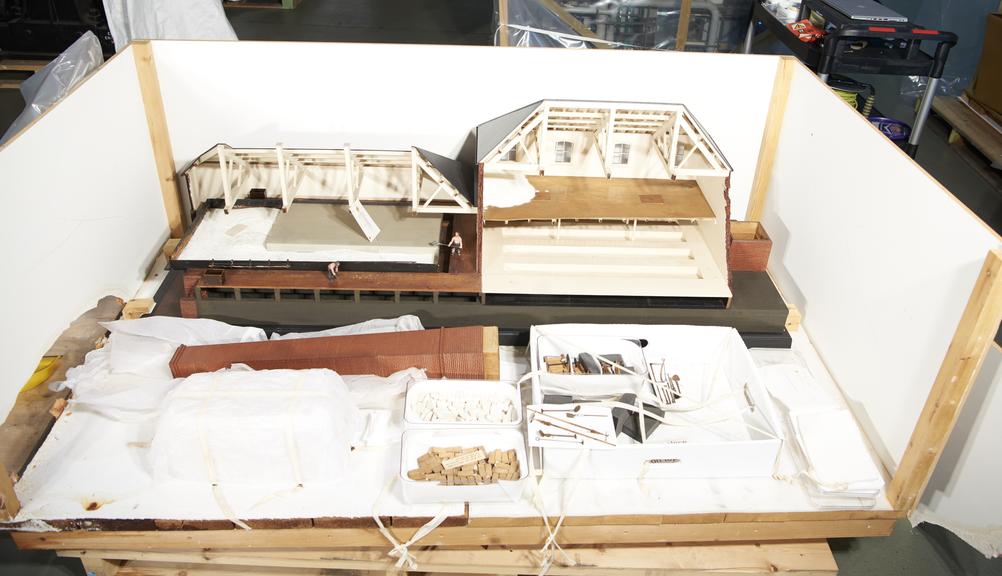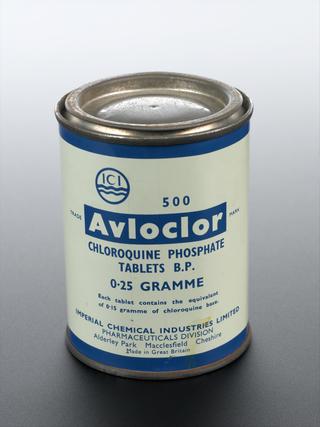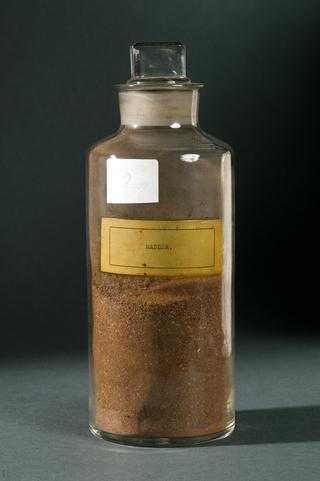Model of Handed Square Salt Pan, Stove and Room
Model, scale 1:24, of Handed Square salt pan, stove and room, used for the manufacture of 'squares' of salt. includes accessories 3 small barrows, 16 model tools, model salt boxes and salt blocks
More
The banks of the river Weaver in Cheshire are the oldest sites of salt production in the UK, having been producing salt since the Romans. The Winsford salt mine in particular has historically been the largest producer of rock salt in Britain and the nation’s oldest working mine.
The industrial revolution brought about the significant expansion of this salt-making process as well as a massive demand for salt from the chemical industry. This model was built in 1925 depicts the layout of a typical Cheshire salt pan works which were in almost continuous operation during the 19th and 20th century.
Salt works could produce salt through a combination of different processes, ranging from mining and extracting pure rock salt, to pumping up brine and evaporating it to produce ‘white salt’. There are various ways of acquiring brine, the most common form in Cheshire being the extraction of natural brine which sits on top of rock salt formations, however artificial brine could be created by pumping fresh water through salt beds.
Industrial salt pan works would pump natural brine, which is on average one part salt and three parts water, from underground via shafts and bores powered by steam engines. The brine would be poured into shallow iron pans and left to evaporate. For fine table salt, the brine would be rapidly boiled in smaller pans at temperatures around 107-108 degrees, whilst courser salt would be made by more slowly evaporating the brine in larger pans at around 45-50 degrees.
The wet salt crystals which form in the pans during the evaporation process are then moved into wooden tubs to be dried by the residual heat coming from the coal fires used to boil the brine. The dried crystal ‘lumps’ were finally moved to final processing where they were cut or ground into various sizes for industrial or domestic use or left as large square salt blocks. Fine salt is most often used in food, whilst courser salt saw use in soap making, alkali works, fishing, and in cleaning products.
Whilst new technologies developed during the mid-20th century would be used to further refine the open pan salt production process, such as mechanical stokers, welded pans and fibreglass tubs, the process remained mostly unchanged throughout the 19th and 20th centuries until the ultimate decline of open pan salt production in the 1960s.







